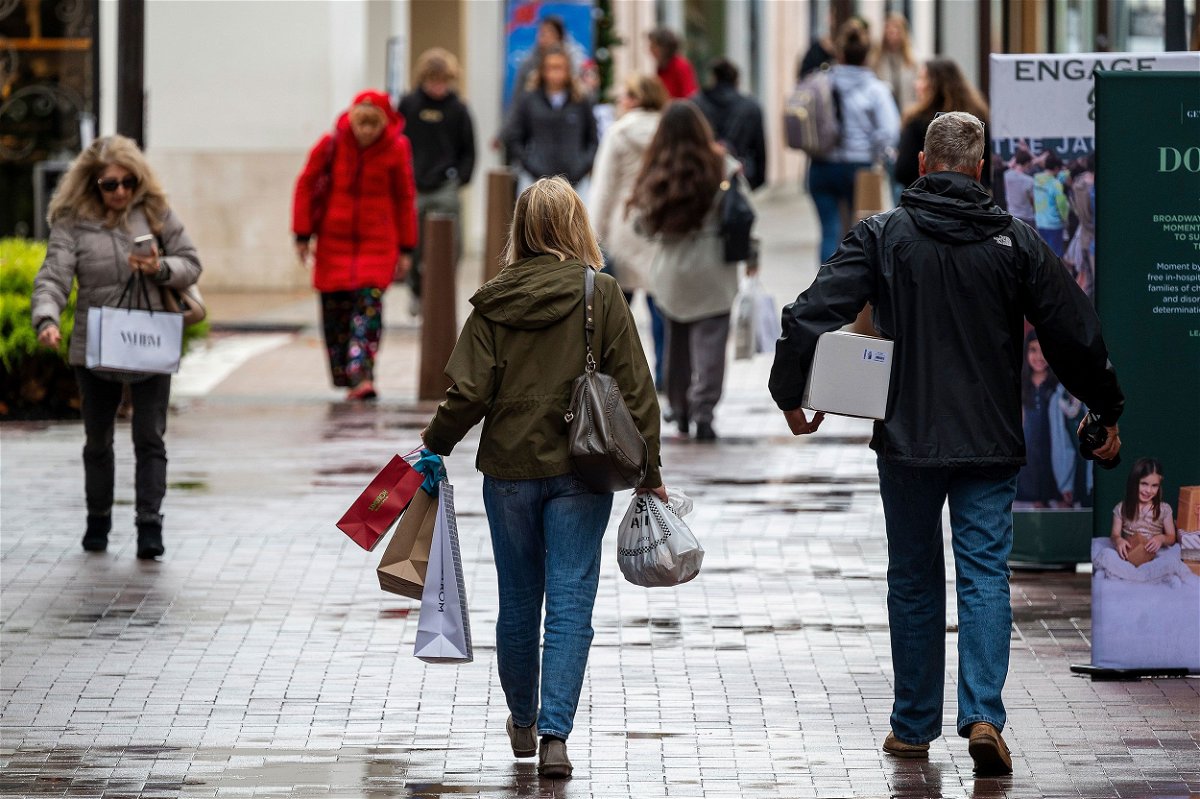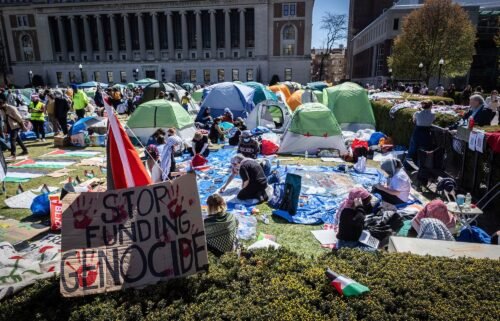US retail sales rose at a faster pace in December

Shoppers carry bags in Walnut Creek
Washington, DC (CNN) — Americans spent at a faster clip in December, closing out a year of surprising economic resilience largely driven by the US consumer.
Spending at US retailers rose 0.6% in December from the prior month, the Commerce Department reported Wednesday. That was a much stronger pace than November’s 0.3% gain, and it also beat economists’ expectations. Retail sales are adjusted for seasonal swings, but not inflation.
Sales at department stores jumped 3% in December, the most of any category. Spending at car dealerships, clothing stores and online also increased at a solid pace last month. The latest figures also show that American retailers had a strong holiday season.
Meanwhile, sales at gas stations, furniture stores and personal-care shops declined in December.
Spending is heavily influenced by the state of the labor market, and Wednesday’s report coincides with government data showing that employers continued to hire at a solid clip last month as the unemployment rate held steady at a low 3.7%. US consumers have also been racking up debt over the past year.
December’s strong retail-sales figures suggest that American shoppers could continue to fuel the US economy in 2024, though economists expect hiring and spending to run at a slower pace compared to last year.
A slowing economy, but no glaring signs of a recession
The US economy is widely expected to gradually cool this year, but likely not fall off a cliff. Wells Fargo economists recently updated their economic forecast to reflect continued growth over the next two years, instead of a recession.
“In the spirit of John Maynard Keynes, the facts have compelled us to change our minds,” they wrote in a note Friday. “In short, we now look for the US economy to continue expanding over our entire forecast period, which runs through the end of 2025.”
The Federal Reserve has raised interest rates to a 23-year high in a bid to tamp down high inflation, after kicking off its historic inflation-busting campaign in March 2022. So far, the central bank has seen some substantial progress in taming price increases.
With the economy holding steady and inflation running at a much slower pace, the Fed is on the verge of pulling off the impossible: inflation reaching the central bank’s 2% target without a sharp rise in unemployment, also known as a “soft landing.”
“A recession seems increasingly unlikely after retail sales beat estimates for the sixth straight month,” David Russell, global head of market strategy at TradeStation, wrote in a note Wednesday. “A soft landing could be taking shape before our eyes.”
Consumer spending accounts for about two-thirds of the US economy, so Americans continuing to open their wallets bodes well for the chances of a soft landing and no recession. And as long as the job market remains in good shape, US consumers will continue to have the ability to spend.
Rate cuts might not be as imminent as some investors think
Fed officials are primarily focused on inflation figures, but they also pay close attention to other facets of the economy, including job openings, wage gains, spending and economic growth.
Officials have said they want to see both the job market and the broader economy cool further to be assured that inflation is on its way to 2%, so stronger-than-expected economic data could complicate the Fed’s ongoing inflation fight.
It could mean that rate cuts might not begin in March, as some investors are expecting.
“Risks that would delay or dampen my expectation for cuts this year are that economic activity that seems to have moderated in the fourth quarter of 2023 does not play out; that the balance of supply and demand in the labor market, which improved over 2023, stops improving or reverses; and that the gains on moderating inflation evaporate,” Fed Governor Christopher Waller said Tuesday during a conversation hosted by the Brookings Institution.
The Fed’s preferred inflation gauge — the Personal Consumption Expenditures price index — rose 2.6% in November from a year earlier, down from 2.9% in October and the 40-year high of 7.1% notched in June 2022. On a monthly basis, prices fell in November for the first time since April 2020.
Officials don’t seem to be fully convinced that inflation is on a certain path to 2% just yet and Waller said that whenever the Fed does begin to cut rates this year, it should be done “methodically and carefully.”
“With economic activity and labor markets in good shape and inflation coming down gradually to 2 percent, I see no reason to move as quickly or cut as rapidly as in the past,” he said.
The-CNN-Wire
™ & © 2024 Cable News Network, Inc., a Warner Bros. Discovery Company. All rights reserved.

